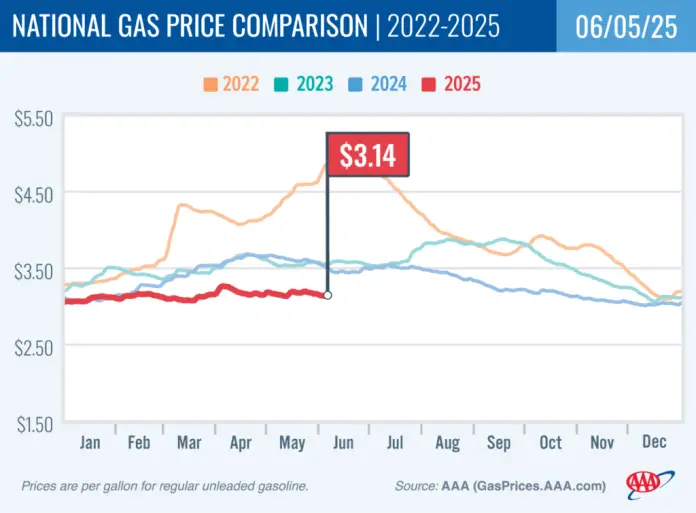As the summer driving season heats up, small business owners will be relieved to know that gas prices have taken a surprising dip. The national average for a gallon of regular gasoline is currently $3.14, down two cents from last week and a significant 36 cents cheaper than this time last year. This reduction is attributed largely to consistently low crude oil prices, with supply outpacing demand, making this June the most affordable for fuel since 2021.
This price decrease comes as a sigh of relief for small business owners, many of whom are feeling the pinch of rising operational costs. Lower gas prices can mean significant savings for businesses that rely on transportation, particularly those in sectors such as delivery services, logistics, and mobile businesses. Consistent fuel rates also allow for better budgeting and financial forecasting, which are critical during the busy summer months.
Moreover, according to the Energy Information Administration (EIA), gasoline demand experienced a notable drop from 9.45 million barrels per day to 8.26 million, coupled with an increase in domestic gasoline supply from 223.1 million barrels to 228.3 million barrels. While gasoline production decreased slightly, averaging 9 million barrels per day, the overall dynamics of the market suggest stable pricing moving forward.
Amidst the economic landscape, oil prices have been fluctuating, with West Texas Intermediate (WTI) crude falling by 56 cents to settle at $62.85 a barrel. Currently, U.S. crude oil inventories sit at 436.1 million barrels, about 7% below the five-year average for this time of year. This inventory status adds a level of unpredictability that small business owners should consider when planning their operations.
Gas prices, of course, vary widely across the country. States like California ($4.73) and Hawaii ($4.47) rank among the highest, while states such as Mississippi ($2.64) and Louisiana ($2.72) offer significantly lower prices. Understanding regional fuel costs will be essential for small business owners who operate across state lines or are looking for cost-effective strategies for transportation.
In addition to gasoline, electric vehicle (EV) charging costs have remained stable at an average of 36 cents per kilowatt-hour at public charging stations. Given the growing interest in electric vehicles among consumers and business fleets alike, small business owners might also evaluate the potential savings from transitioning to electric vehicles. However, they should consider where their businesses operate, as charging costs also vary significantly by state—Alaska leads in high costs at 50 cents, while Kansas offers a more attractive average of 25 cents.
For small businesses that depend heavily on fuel, lower gas prices mean improved margins and increased flexibility in managing transportation logistics. However, owners should remain vigilant about potential supply issues or changes in crude oil pricing that could affect their operational costs in the near future.
Fortunately, business owners can keep track of current gas and electric charging prices along their routes using tools like the AAA TripTik Travel planner. This resource can help identify the most cost-effective fueling options available, which is essential for keeping expenses in check.
As the summer unfolds, this unexpected lull in gas prices presents an opportunity for small business owners to reassess their operating budgets and potentially invest in strategies to capitalize on these savings. With cost-per-mile more manageable, there’s room for strategic planning in hiring, service expansion, or even exploring green transportation options.
Small business owners looking for more detailed statistics or further insights into fuel trends can always access the latest analyses through the AAA Fuel Site. The next weekly fuel report is set to return on June 26, providing further data on this ever-evolving market.
Image Via Gas Price



